by William Kherbek // Mar. 28, 2023
This article is part of our feature topic Money.
Visiting Danai Anesiadou’s exhibition ‘D POSSESSIONS’ at WIELS in Brussels this winter, the last thing I expected to be reminded of were long drives in America, listening to call-in programmes on American Bible radio. Walking through the rooms of Anesidadou’s sculptural creations, and the psychic realms towards which they gesture, my mind returned to journeys along American backroads, particularly in Wisconsin and Iowa, where Bible radio broadcasts materialised out of ethereal static, as various public radio stations faded.
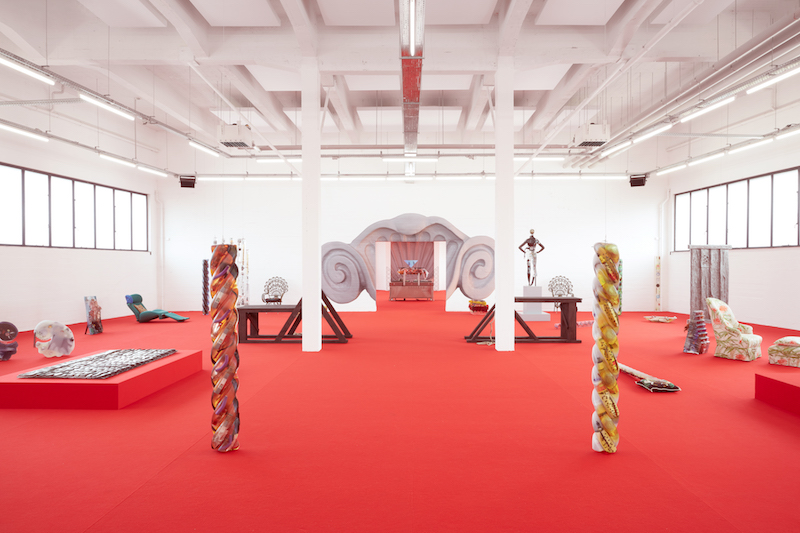
Danai Anesiadou: ‘D POSSESSIONS’, installation view at WIELS, Brussels, 2023 // Photo by We Document Art
A subject that exercised (with an “e” not an “o”) the callers to more than one programme related to a mysterious set of figures in the Old Testament known as the Nephilim. Already something of a biblical deep cut, the Nephlim were living rent free in the heads of the callers in special relation to a passage in Genesis 6:4: “The Nephilim were in the Earth in those days, and also after that, when the sons of God came in unto the daughters of men and bore children to them.” Among the literal apocalyptic images the Bible is rife with, what could be so disturbing about these few words situated a bit before the story of Noah’s Ark? What if, dear reader, the Nephilim “coming in unto the daughters of men” meant that demons—or “giants,” as “Nephilim” is sometimes translated—could mate with human beings and bear children? Could not Jesus Christ be one such hybrid being? Would not Salvation itself then be at stake? This may seem like obscure Biblical analysis but this notion of demonic possession and infiltration of the world speaks to ideas that feel intensely contemporary.
There’s another quotation from the Bible that feels important to revisit here, as well. From Proverbs, this time: “For the love of money is the root of all evil.” But the quotation is less about money itself than our psychic relationship to it. Money is a kind of demon, or a fetish. The great economist John Maynard Keynes noted, in decrying the obsession with the gold standard as a backstop of financial value by policy makers, that “gold is a fetish.” Anesiadou has elsewhere explored this very fetish. In her work ‘It Will Not Happen for It to Happen’ (2017)—part of the artist’s contribution to that year’s documenta—Anesiadou vacuum wrapped a kilogram of fine gold and had it mounted on a gallery wall. The fetishistic relationship between money and its supposed incarnation, precious metals, spoke in refreshingly material terms of the psychological dimension of money, value and its anxious relationship to art. Don’t mention the price. Well, not unless you’re buying…
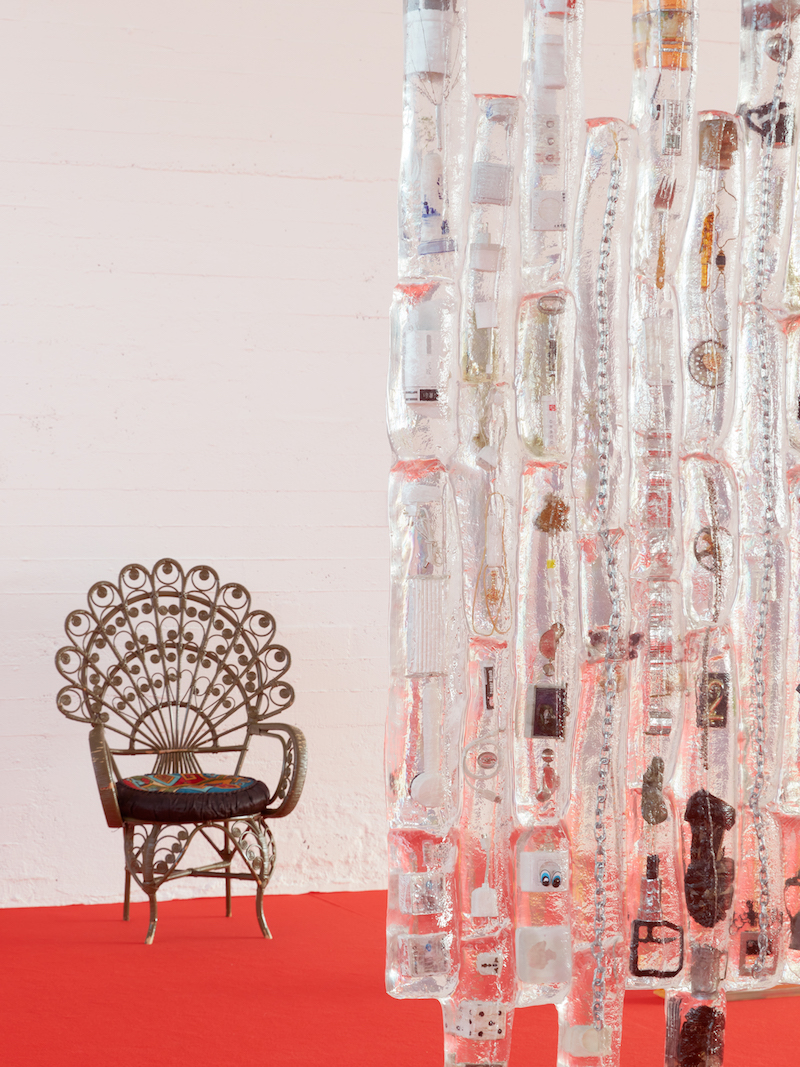
Danai Anesiadou: ‘D POSSESSIONS’, installation view at WIELS, Brussels, 2023 // Photo by We Document Art
In the exhibition at WIELS, there is a frank acknowledgement of the pleasures and attractions of material goods. The love of money may be cartoonish, but the love for what it can buy is the stuff of life and livelihoods. Anesidadou’s exhibition is composed of works that include objects among the artist’s prized possessions, many of which are cast in resin. These include shoes, clothing, variations on furniture, variations on tat, guillotines. You may not be desirous of a guillotine, but such objects do have a way of calling out to be used. An object can possess its possessor, and to a certain extent this is an animating notion in ‘D POSSESSIONS.’ By dispersing her collection of objects, Anesiadou suggests that they become “orgonites”—in the terminology of Wilhelm Reich, something like lightning conductors for cosmic “orgone” or “positive life energy.” If this is starting to sound like a heady brew of not entirely compatible references, Anesidaou isn’t afraid to pile up her citations and contractions. As a result, her works enter into a very contentious discourse around the status of objects in art in a dematerialised age.
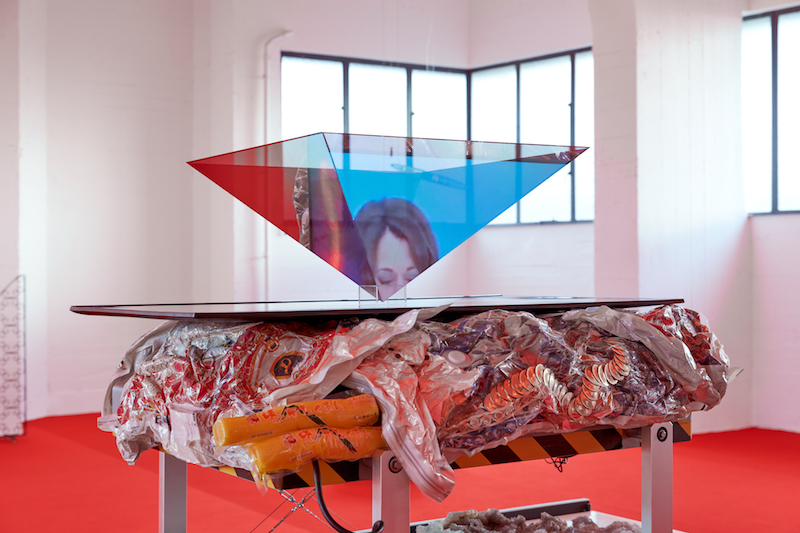
Danai Anesiadou: ‘D POSSESSIONS’, installation view at WIELS, Brussels, 2023 // Photo by We Document Art
The Object Oriented Ontology school of thought would argue that however much we covet an object, we can never truly know it. In other theoretical terms, imbuing objects with quasi-demonic properties might be a literalisation of Marxist notions of “commodity fetishisation.” Indeed, Anesidadou’s move from gold—the original fetishised commodity—to objects (possessions) does seem significant at the present moment. Fashion and art feel very proximal to each other these days, and the ways in which luxury clothing and objects are positioned as almost therapeutic mascots has worrying psychological implications. The term “retail therapy” used to be a joke. Thus, Anesiadou’s need to de-possess herself of these potentially D(emonic) Possessions might be a healthy impulse. But what does it look like up close?
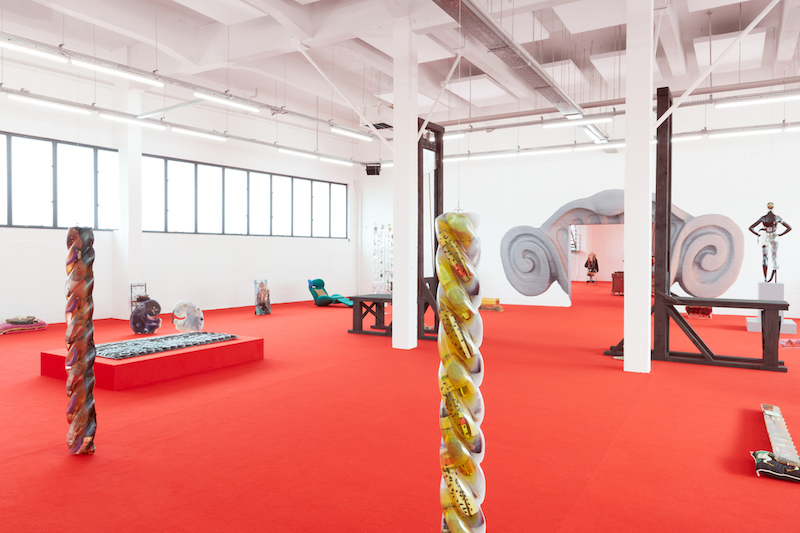
Danai Anesiadou: ‘D POSSESSIONS’, installation view at WIELS, Brussels, 2023 // Photo by We Document Art
Entering the gallery at WIELS, we find something like an IKEA display designed by Alejandro Jodorowsky. A deep red carpet covers the entire floor of the main space, and a landscape of curiosities spreads out over its covetable surface. Chairs masquerading as peacocks, braided pillars, loungers that recall the shape of bodies suffering under aerobic exercise are stationed throughout. For my part, I was particularly attracted to a work that was something like a chair, something like an exercise bench, something like a coatrack, and mostly like a mirror. The mirror element was mounted on the “shoulders” of a harness-like seat back, on the backside of which hung a jacket. Below this, in segments recalling an insect’s body, was a stool with what looked like a lump of volcanic rock seated on it. A pair of slipper/foot rests stood below. I can’t say I found the idea particularly user-friendly, and no doubt no user of it would be particularly friendly; nevertheless it took on a much greater significance on that very account. Its clumsiness became the condition of its value.
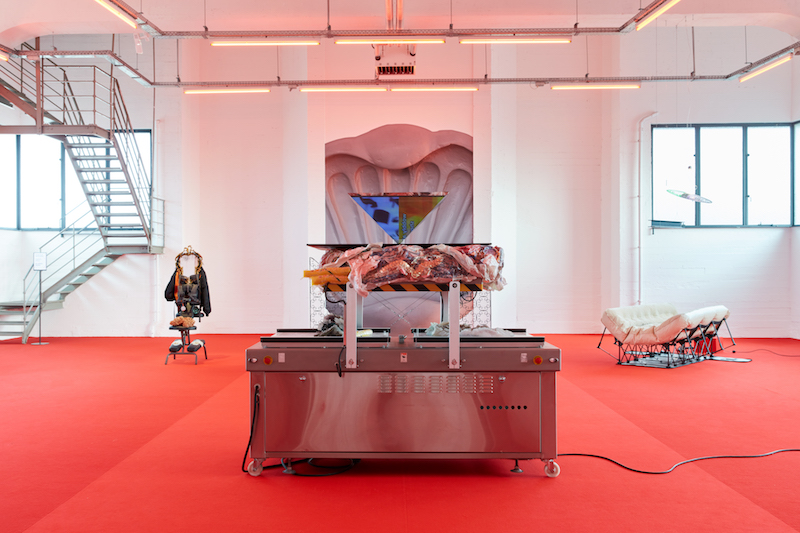
Danai Anesiadou: ‘D POSSESSIONS’, installation view at WIELS, Brussels, 2023 // Photo by We Document Art
In the face of the pumice-like rock in the mirror piece, I began to think about the de profundis quality to the works, a notion which Anesiadou explores in the show’s accompanying text, particularly in her discussion of her abortive plan to make jewellery from gall stones that her body would produce. Sadly, the vagaries of capitalism (her gallery stopped trading) prevented her from realising it, though the artist notes that Gloria Vanderbilt—an American heiress and designer—beat her to the idea of commodifying one’s gallstones. Suffering, especially female suffering, has traditionally been a currency of its own in capitalist culture, and from the epoch bodice to the age of the Brazilian butt lift and buccal fat removal, the cycle of extraction and fetishisation continues. Demons of desire have a way of contacting our own inner demons. ‘D POSSESSIONS’ doesn’t entirely suggest the cycle can be broken, but it is a gesture towards a kind of freedom, or a hope of it. And in these times, hope is a rare and valuable currency.
Exhibition Info
WIELS
Danai Anesiadou: ‘D POSSESSIONS’
Exhibition: Jan. 28 – Apr. 23, 2023
wiels.org
Av. Van Volxem 354, 1190 Brussels, Belgium, click here for map






















